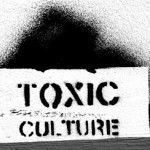What’s the first thought you have about your work or employer when you wake up? Are you energized, enthused and eager to get on with your day, or just hoping to get through it? If you’re energized and looking forward to the day, you likely reflect  the 21% of nearly 90,000 employees surveyed by Towers Perrin’s in 2011 who said they were engaged. (Only 8% reported being “fully engaged.”) If you feel anxious, resentful and unmotivated, you probably identify more with the 38% surveyed who said they were wholly or partially disengaged. For sure the cost of disengagement for employers is high, including lost productivity, less innovation, more conflict and higher health care expenses. If you’ve been there, you know about the personal toll that it takes too.
the 21% of nearly 90,000 employees surveyed by Towers Perrin’s in 2011 who said they were engaged. (Only 8% reported being “fully engaged.”) If you feel anxious, resentful and unmotivated, you probably identify more with the 38% surveyed who said they were wholly or partially disengaged. For sure the cost of disengagement for employers is high, including lost productivity, less innovation, more conflict and higher health care expenses. If you’ve been there, you know about the personal toll that it takes too.
I remember an article targeted to employers about “5 Signs That You Made A Bad Hiring Decision.” (CBS New Money Watch, April 4, 2011.) It got me to thinking about the other side of the coin – signs that maybe we’ve gone to work for the wrong employer, or better yet that we shouldn’t sign on in the first place. Here are my top ten signs that might be the case; they might also serve as indicators for employers of things to shore up if they want a more engaged workforce:
- Unclear or muddled direction – The organization either hasn’t articulated its mission, strategy and priorities, or it’s hard to buy in to its value proposition. Is this an organization or unit in an organization with a clear understanding of how it creates value?
- Lack of fit – Is the organization’s mission one that you identify with? Can you get behind the goals and are you excited about helping achieve them? Will you have the opportunity to employ your most motivated skills? This is about Mihaly Csikszentmihalyi’s “flow” – when we are “stretched to our limits in a voluntary effort to accomplish something difficult and worthwhile.” (Flow; Harper Perennial, 1990)
- No “center” – What does the organization stand for? Core values, principles or beliefs are easier stated than practiced consistently, so look beyond a web site or posters on the walls. Ask others who know the organization or check places like glassdoor.com to learn what a culture is really like. Dr. Charles Hughes’ research at the Center For Values Research demonstrated that compatibility of individual and organizational values correlates highly with workers’ desire to remain with their employer.
- Stunted growth potential – Is this someplace where you can learn and grow? Much of this is linked to an organization’s value proposition and
 strategy, but not all. Selfish managers with no interest in your aspirations or inclinations to help you achieve them play huge roles. How do the organization and your likely boss invest in training or mentoring others?
strategy, but not all. Selfish managers with no interest in your aspirations or inclinations to help you achieve them play huge roles. How do the organization and your likely boss invest in training or mentoring others?
- Clueless leaders – Is your immediate supervisor or a sizeable group of managers severely “E.Q.-challenged?” Do they exhibit significant blind spots and a severe shortage of self-awareness or self-control? Is there no concept of how much additional workload is too much? I still remember the sense of dread, cynicism and resignation among employees I interviewed in an organization headed by a modern-day Simon Legree.
- Poor alignment – Is everyone and everything pretty much “in-sync” with the organization’s stated direction? Or do you get the sense that as much or more energy is spent arguing, posturing or engaging in office politics than on “keeping the main thing the main thing” and satisfying customers?
- Confusing “unity” with “sameness” – Unity is great, but that doesn’t mean that everyone should look alike, think alike, act alike or always agree. Are different perspectives and respectful disagreement encouraged?
- Lack of truth-telling and transparency – Is the culture overly secretive? Is it unsafe to surface “bad news,” or is it hard for people to get information that they need? Are financial statements or other information that investors, customers or other stakeholders want easy to find and understand, or opaque?
- Toxic culture – “Toxic” means just that, poison, or a health hazard.
 Contributors to toxic cultures beyond those mentioned here include gossip and rumors, unfairness, bullying and blatant disrespect.
Contributors to toxic cultures beyond those mentioned here include gossip and rumors, unfairness, bullying and blatant disrespect.
- Integrity gaps – If you’ve read my book Navigating Integrity – Transforming Business As Usual Into Business At Its Best, you know that from my perspective all of the above signal integrity gaps. Other integrity-related trouble signs include ethically questionable practices, poor stewardship of human or natural resources and lack of accountability.
Try assigning a rating from “0” to “5” for each of these, with “5” being worst. If the total rating for your work or employer is 20, or 5 on any one of these, I’d say start making a move. Update your resume and social network profiles, fire up your network and exercise due diligence evaluating future potential opportunities. I hope that this serves as a useful checklist of what to look for and what to avoid then. It’s hard to evaluate most of these factors on our own, so ask around; check sites like glassdoor.com and employerreviews.net
I know that in some organizations there is a fair amount of pent-up interest in jumping ship when the opportunity arises. It has been mainly an employers’ market the last few years, but that will likely change. As the market improves and competition for talent heats up, applicants and employees will be in a position to be more discerning. If not too late, I hope that this checklist proves useful for organizations that want to minimize their loss of talent when the tide turns.
How does your employer rate for each of these dimensions? Is it time to think of parting company?
Employers – do you know how talent in your organization rates you on each of these dimensions? How will you find out and make adjustments in order to keep your best talent?
“What we really want to do is what we are meant to do. When we do what we want to do money comes to us, doors open for us, we feel useful, and the work we do feels lie play to us.” (Julia Cameron)

Great article Al, it fits with the Oct. 2011 Gallup report stating that 71% percent of American workers are “not engaged” or “actively disengaged” in their work i.e. emotionally disconnected from their workplaces and therefore less likely to be productive. That leaves a shocking one-third of American workers who are “engaged,” or involved in and enthusiastic about their work and contributing to their organizations in a positive manner. I’d be interested in a cross-cultural survey and learning from other cultures and their practices even though you list some of the building stones for engagement that are likely useful in many different settings and cultures.